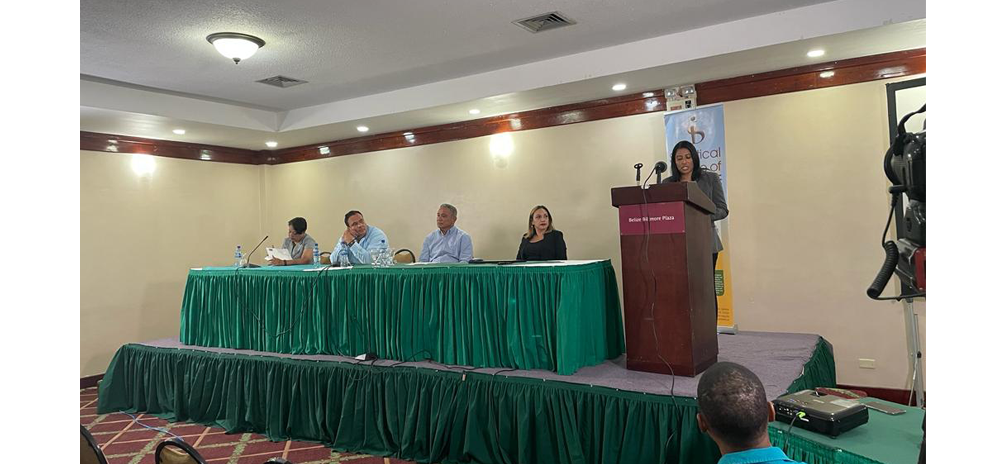Photo: Multidimensional Poverty Index conference
by Charles Gladden
BELIZE CITY, Wed. Mar. 8, 2023
On Wednesday, March 8, the Statistical Institute of Belize (SIB) officially presented its findings on the first national Multidimensional Poverty Index (MPI) study, which determined, on the basis of an MPI of 0.139, that 35.7 percent of Belize’s population—which amounts to an estimated 133,516 persons or 31,399 households—are multidimensionally poor.
The MPI was generated from data collected in the September 2021 Labor Force Survey and characterizes the experience of poverty in Belize by using the Alkire-Foster (AF) method, which assigns a value and quantifies the various deprivation levels that Belizeans are facing in the areas of education (0.25), employment (0.25), health (0.25), and living conditions (0.25).
Those various values which measure different facets of deprivation are then used to determine which segments of the population are multidimensionally poor—information which can be used to direct policy initiatives, allocate resources and evaluate the effectiveness of policies and programs aimed at alleviating poverty over time.
“This looks at poverty at a broader level than just in terms of money. Normally, we are used to measuring it in terms of money. Does the household have enough money to meet its needs or not. The MPI looks at poverty in a much broader sense by looking at different types of deprivation, so specific basic needs that are or are not met for the household. What we did was, we collected data to assess whether or not households were meeting 17 basic needs represented by 17 indicators, and using those we were able to divide our households into those which were multi-dimensionally poor,” said Diana Castillo-Trejo, Director General for SIB.
Castillo-Trejo further explained, “We covered four dimensions which we considered to be important to wellbeing. These dimensions are health, education, employment, and living standards. Under health, you have your things like [the] quality of the drinking water, access to health services; under education you have whether or not children of school age are attending school, whether or not children of school age are lagging behind the grade they’re supposed to be in. For living standards, we look at the quality of housing materials, the type of assets that they have; and under employment, we look at persons being unemployed, persons being informally employed, persons being under-employed in the household.”
The Prime Minister of Belize, Hon. John Briceño, told members of the media that the MPI will be used to give a wider picture of poverty in the country.
“This has been a concern even when we were in government back in 1998 and 2008. We felt that whenever you’re doing a study on poverty, you’re just looking on the issue of monetary terms … In many instances, people have a chicken in their backyard, they have access to food and they work [on] their own; they’re not necessarily part of the formal economy. By doing this, I think we could have a more in-depth look, [at] not just an in-depth look at the poverty in our country, but it would also allow us to look at the actual indicators. There are 17 indicators, and from that, we can see where we need to address, what we need to work on to improve the lives of our people,” said Prime Minister Briceño.
What the MPI study has revealed is that the district with the smallest number of multidimensionally poor persons is Toledo. Also, multidimensional poverty was found to be most prevalent within the Maya ethnic group.
It was also found that households headed by persons with no formal education have the highest rate of poverty at 54.3 percent; in comparison to households headed by persons who completed either primary, secondary, or tertiary education at 4.1 percent, 17.1 percent and 35.1 percent respectively.

